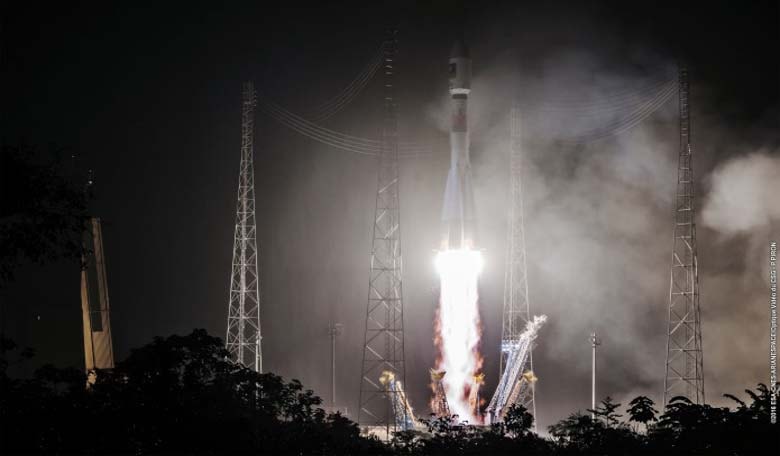Following yesterday’s successful launch, Soyuz has safely deployed two further Galileo navigation system satellites into orbit, helping Europe to provide a highly accurate global positioning service that will also be inter-operable with GLONASS and GPS, the two other global satellite navigation systems.
Yesterday’s double launch means that the Galileo programme, named for the astronomer who pinpointed Earth’s true position in the Solar System, now has 14 satellites in orbit.
The separation of the satellites from the Fregat fourth stage of the launcher went by the book and the coming days will see a careful sequence of orbital fine-tuning to bring them to their final working orbit. “Today’s textbook launch has added two more satellites to what has become Europe’s largest satellite constellation,” commented Jan Woerner, Director General of ESA in a press conference yesterday. “It was made possible by the fact that European industry’s manufacturing and testing of Galileo satellites has achieved a steady tempo.” Yesterday’s launch means that, in terms of numbers, Europe’s Galileo constellation is halfway to completion.
This launch was significant for other reasons too, as it was Galileo’s last flight using a Soyuz rocket. From the end of 2016, further launches will proceed with a customised Ariane 5 rocket that will lift four satellites into orbit in one flight, rather than two satellites each time, thus speeding up the deployment of the constellation.
One of Galileo’s many roles will see it play an important part in the Medium Earth Orbit Search and Rescue system. When it is integrated into the COSPAS-SARSAT system, the Search and Rescue (SAR) Transponder on Galileo satellites will enable nearly real-time detection and localisation of distress signals from anywhere in the world, thus helping SAR operators respond to distress signals faster and more effectively by broadcasting information to dedicated ground stations (MEOLUTs).
“Meanwhile, hard work is proceeding behind the scenes to ensure the worldwide Galileo system, including its far-flung ground stations, is reliable, secure and robust for the start of operational services to users,” noted Paul Verhoef, ESA’s Director of the Galileo Programme and Navigation-related Activities.











